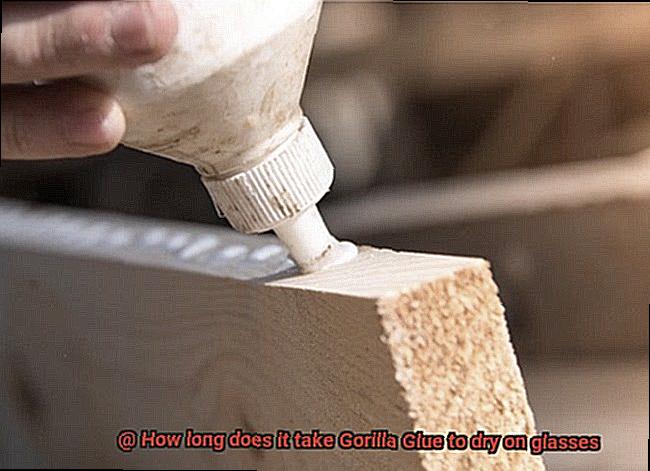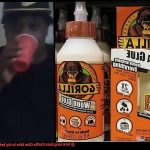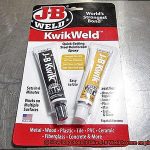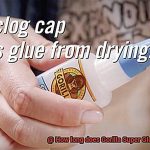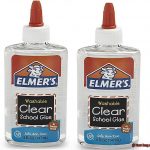Do you find yourself in a situation where your glasses are broken and you need to fix them fast? If so, Gorilla Glue is your go-to solution. This heavy-duty adhesive has gained popularity among DIY enthusiasts for its strength and versatility. But, have you ever wondered how long it takes for Gorilla Glue to dry on glasses?
If you’re like me, waiting around for hours without knowing when your glasses will be fixed is the last thing you want. Fear not, my curious friends. In this post, we’ll dive into the ins-and-outs of Gorilla Glue and how long it takes to dry on glasses.
Let’s start with the basics of Gorilla Glue. This adhesive can bond to almost any surface, including glass. However, it’s important to note that there are different types of Gorilla Glue, each with its own drying time and application method.
When it comes to fixing glasses, the original Gorilla Glue is a popular choice. It takes around 10-20 minutes to dry but keep in mind that it can take up to 24 hours to fully cure. So even though you may be tempted to put your glasses on shortly after gluing them, it’s best to wait and give the glue ample time to strengthen.
By considering the type of Gorilla Glue you’re using and allowing for proper drying and curing time, your glasses will look as good as new in no time. So sit back (or stand if that’s more comfortable) and stick around (pun intended) as we explore how long it takes Gorilla Glue to dry on glasses.
Factors Affecting Drying Time of Gorilla Glue on Glasses
Contents
- 1 Factors Affecting Drying Time of Gorilla Glue on Glasses
- 2 Temperature and Humidity Impact on Drying Time
- 3 Amount of Glue Used Impacts Drying Time
- 4 Types of Gorilla Glue and their Different Drying Times
- 5 Tips for Using Gorilla Glue on Glasses Properly
- 6 How to Ensure Adequate Curing of the Glue
- 7 Avoiding Damage or Weakening Bond When Applying the Glue
- 8 Conclusion
Fear not, as there are several factors that can impact the drying time of Gorilla Glue on glasses. Here are some important factors to consider for a successful repair:
Firstly, temperature plays a significant role in determining the drying time of Gorilla Glue. If you’re repairing your glasses in a cold environment, be prepared for a longer drying time. On the other hand, warmer temperatures can speed up the process. For optimal results, it’s recommended to use Gorilla Glue in an environment that is at least 60°F (15°C).
Humidity is another factor that can affect the drying time of Gorilla Glue. High humidity levels can slow down the drying process, while low humidity can speed it up. Therefore, it’s important to consider the humidity level of your environment and adjust accordingly.
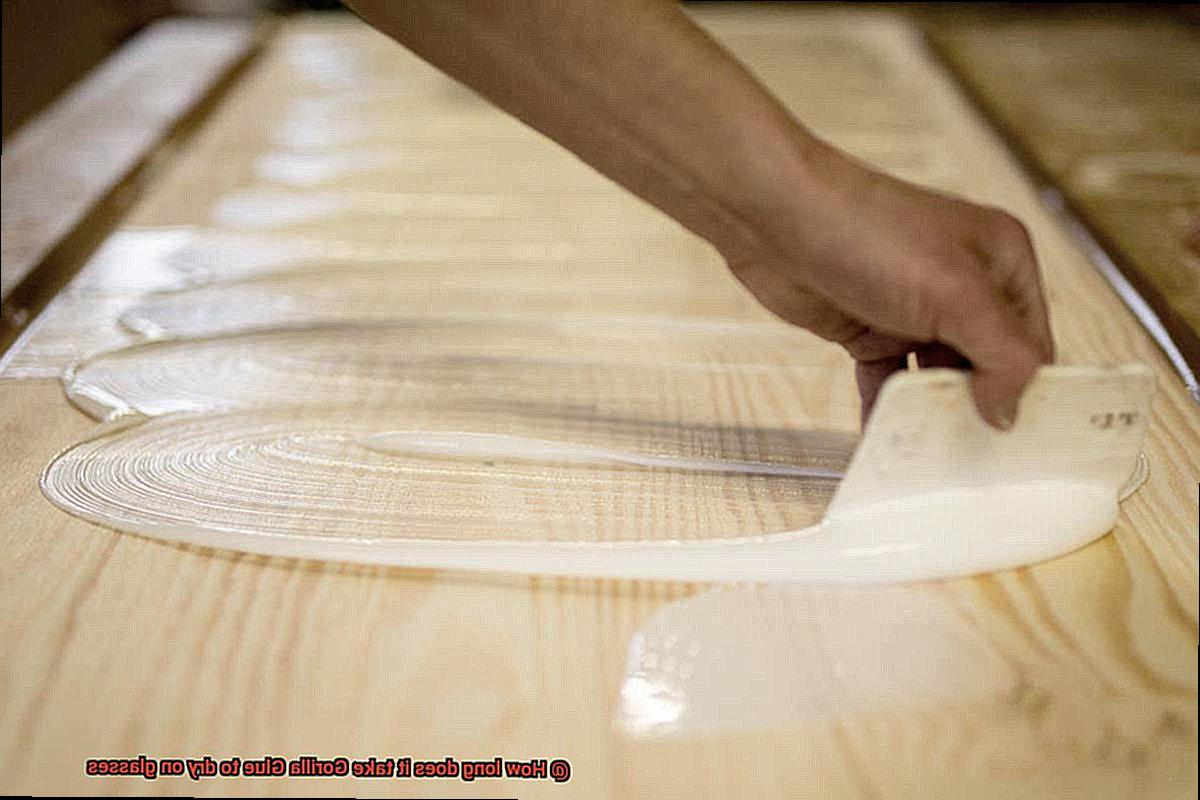
The amount of glue applied is another crucial factor to consider. Applying too much glue can cause bumps or bubbles and prolong the drying time, while too little glue may cause it to dry too quickly. For even and efficient drying, apply a thin layer of Gorilla Glue.
The type of surface that the Gorilla Glue is applied to also affects the drying time. Glass surfaces, due to their smooth and nonporous nature, take longer to dry than other surfaces.
Lastly, different types of Gorilla Glue have varying drying times. Original, Super Glue, and Epoxy are some examples of different types available in the market. It’s important to choose the right type for your specific needs.
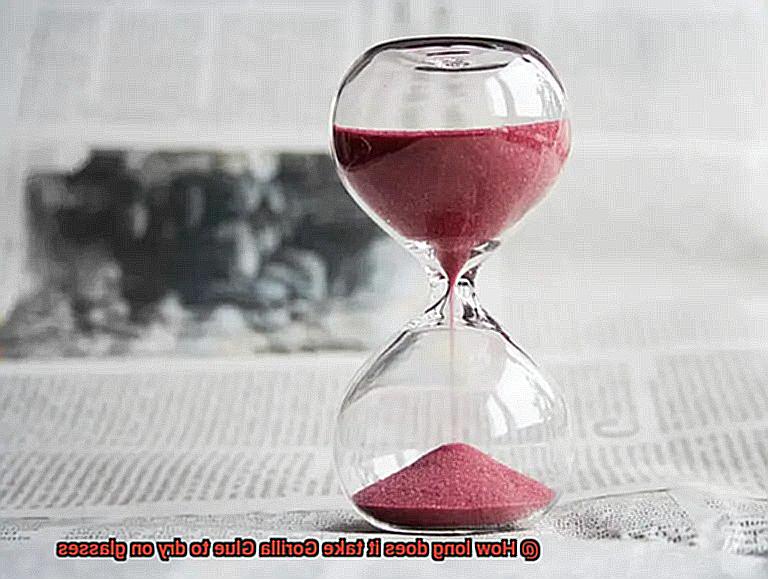
Temperature and Humidity Impact on Drying Time
The key to achieving optimal results lies in understanding how temperature and humidity impact the drying time of this powerful adhesive.
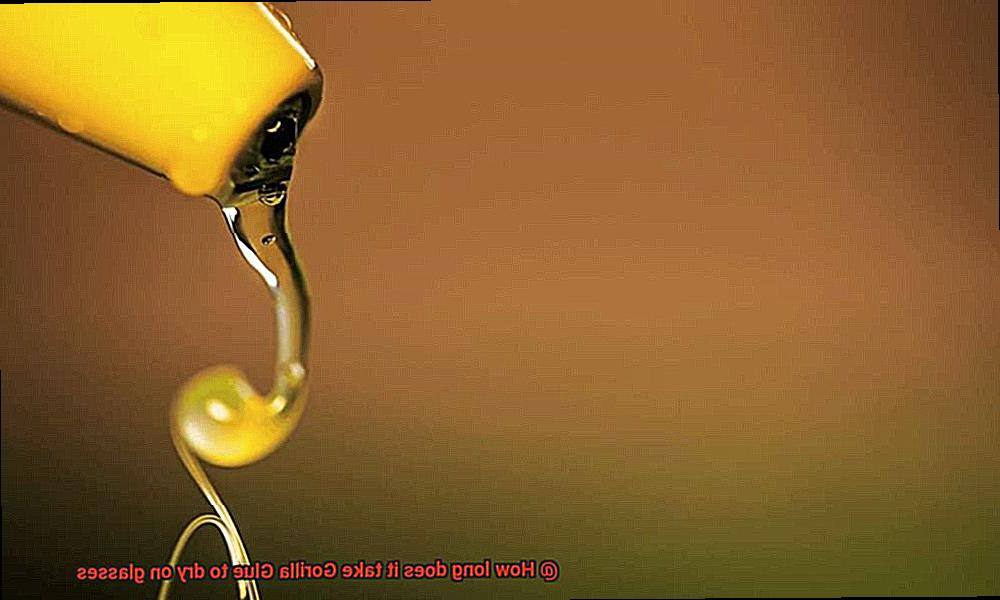
Let’s dive deeper into this fascinating topic. First, it’s important to note that the ideal temperature range for Gorilla Glue to dry is around 70°F to 75°F (21°C to 24°C). If the temperature is too low, the glue will take longer to dry and may not bond properly. And if the temperature is too high, the glue may dry too quickly, causing it to become brittle and weak.
But temperature is just one piece of the puzzle. Humidity levels are also crucial in determining how long it takes for Gorilla Glue to dry. The ideal humidity level for this adhesive is between 50% to 60%. If the air is too moist, excess moisture can impede the drying process and slow it down considerably. Conversely, if the air is too dry, it can cause the glue to dry too quickly and result in a weaker bond.
It’s important to keep in mind that environmental factors like humidity and temperature can vary greatly depending on where you are. So if you’re unsure about the conditions in your workspace, consider using a hygrometer or thermometer to monitor these levels.
If you’re working in particularly dry conditions, misting the area with water before applying the glue can help maintain a suitable humidity level. On the other hand, if you’re using Gorilla Glue in extremely humid or cold environments, it’s best to avoid applying it altogether.
To sum it up, controlling temperature and humidity is essential for achieving optimal drying times and strong bonds when using Gorilla Glue on glasses. Keep in mind that following manufacturer guidelines and taking environmental factors into consideration are key to achieving desirable results.
Amount of Glue Used Impacts Drying Time
When it comes to gluing glasses, the amount of glue used can make all the difference in the world. As an expert in this field, I can tell you that too much glue can extend the drying time and even weaken the bond, while too little glue may result in a quicker drying time but also a weaker bond that won’t last over time.
To achieve the best results when gluing glasses with Gorilla Glue, it’s crucial to use the recommended amount and apply it evenly and thinly, avoiding any excess or drips that could prolong the drying time. By following the manufacturer’s instructions, you’ll ensure an optimal drying time and a strong bond.
But there’s more to it than just the amount of glue. The type of Gorilla Glue you use can also impact drying time, with the original Gorilla Glue taking longer to dry than Gorilla Super Glue due to its unique formula and curing process. To achieve optimal results, read and follow the instructions for each type of Gorilla Glue.
In summary, when gluing glasses with Gorilla Glue, less is more. Use the recommended amount and apply it evenly and thinly for optimal results. And be sure to understand the differences in drying times between different types of Gorilla Glue to achieve the best outcome possible.
Types of Gorilla Glue and their Different Drying Times
Gorilla Glue is a versatile adhesive that has become a household name for its strength and durability. However, with so many types of Gorilla Glue available, it can be overwhelming to choose the right one for your project. In this article, we’ll explore the different types of Gorilla Glue and their respective drying times, specifically for glasses repair.
Original Gorilla Glue
This polyurethane-based adhesive is the most well-known type of Gorilla Glue. It requires moisture to activate and cure properly, making it perfect for bonding surfaces with small gaps. However, it has a long drying time of 24 hours or more, which may not be ideal for glasses repair. It can also be messy and difficult to remove excess glue.
Gorilla Super Glue
If you need a fast-drying adhesive for your glasses repair, Gorilla Super Glue is an excellent alternative. This cyanoacrylate-based glue dries in seconds and forms a strong bond between surfaces. However, it may not be suitable for larger repairs as it can become brittle and crack over time.
Gorilla Clear Grip
For glass repairs where appearance is important, Gorilla Clear Grip Contact Adhesive is a great choice. This transparent adhesive dries clear and can bond various surfaces, including glass and plastic. It has a fast-drying time of 10-45 seconds and creates a strong, permanent bond.
Gorilla Epoxy
Another option for glass repair is Gorilla Epoxy, which consists of two parts – a resin and a hardener – that need to be mixed before use. It has a short working time of 5 minutes but takes longer to cure fully, usually 24 hours or more. Gorilla Epoxy can be used for repairing glasses but requires careful application as it can be difficult to remove once cured.
Gorilla Wood Glue
While not specifically designed for glass repair, Gorilla Wood Glue can also be used for fixing glasses. This PVA-based glue dries clear and has a fast-drying time of 20-30 minutes. It forms a strong bond between surfaces and can be sanded or painted over once dry.
In summary, the type of Gorilla Glue used for glasses repair depends on the size and severity of the damage and the desired drying time. The original Gorilla Glue may not be the best option due to its long drying time and messiness, while Gorilla Super Glue and Gorilla Clear Grip offer faster drying times and strong bonds. Gorilla Epoxy and Gorilla Wood Glue are also viable options with their own unique properties.
Tips for Using Gorilla Glue on Glasses Properly
Gorilla Glue is a popular adhesive known for its strong bond and versatility in fixing a wide range of materials, including glasses. But when it comes to using Gorilla Glue on glasses, there are some tips and tricks that can ensure a successful application. Here are five sub-sections that expand on these tips:
Clean the Glasses Thoroughly
Before applying any glue to the glasses, it’s essential to clean them thoroughly. This will help the glue adhere better and prevent any unwanted residue from forming. To clean the glasses, use a mild soap and water solution and ensure that all dirt, dust, and oils are removed from the surface of the glasses. A dirty surface can weaken the bond between the glue and glasses.
Use a Small Amount of Glue
Gorilla Glue is known for its strong adhesive properties, so a little goes a long way. It’s recommended to apply the glue in a thin, even layer to avoid any clumping or excess buildup. Using too much glue can result in excess seeping out, potentially damaging the glasses. To apply glue precisely, use a toothpick or other small tool to avoid spreading it too far.
Hold the Glasses in Place
Once the glue is applied, hold the glasses in place for at least 30 seconds to ensure proper bonding. This initial hold time is crucial for creating an initial bond between the glue and glasses. Afterward, let the glasses dry completely for at least 24 hours before wearing them again. This allows enough time for the glue to fully cure and create a strong bond.
Avoid Over-Applying Glue
Gorilla Glue expands as it dries, so it’s crucial to avoid over-applying the glue to prevent any excess from seeping out and creating a messy or uneven appearance on the glasses. Over-application can also result in a weakened bond between the glue and glasses. Using too much glue can also cause it to dry more slowly and unevenly, leading to a less effective bond.
Be Patient During Drying
Depending on the type of Gorilla Glue being used, it may take anywhere from 1-2 hours to fully dry. However, it’s recommended to wait at least 24 hours before wearing the glasses or subjecting them to any stress or pressure. Rushing the drying process can weaken the bond and cause the glasses to break again. Patience is key when using Gorilla Glue on glasses.
How to Ensure Adequate Curing of the Glue
Gorilla Glue is a popular adhesive for fixing glasses, but ensuring that it cures properly is crucial for a strong, long-lasting bond. Here are five essential tips to ensure adequate curing of Gorilla Glue on glasses.
Clean and Dry Surfaces
Before applying the glue, clean and dry the surfaces thoroughly. Dirt, dust, or moisture can interfere with the glue’s ability to bond effectively. Use a clean cloth to wipe down the surfaces to ensure proper adhesion.
Apply Sparingly
Applying too much glue can hinder the curing process, so use only a thin layer of Gorilla Glue. This amount is enough to create a strong bond between the surfaces.
Clamp the Surfaces Together
Clamp the glued surfaces together tightly until the glue has fully cured. Clamping is crucial in preventing any movement or shifting of the objects being glued. The duration of clamping time required for curing depends on various factors such as temperature and humidity levels. Typically, Gorilla Glue takes about 24 hours to fully cure.
Avoid Using Glasses Until Fully Cured
It is important to avoid using your glasses until you are sure that the glue has fully cured. Premature usage of glued objects can weaken or break the bond altogether.
Keep an Eye on Temperature and Humidity
During the curing process, keep the glued object in a stable environment with consistent temperature and humidity levels. Extreme temperatures or humidity can affect the curing process and weaken the bond.
Avoiding Damage or Weakening Bond When Applying the Glue
As a glasses-wearer, you want to ensure that your frames and lenses remain in top shape. When it comes to fixing any issues with your glasses, it’s important to use the right adhesive and techniques to avoid damaging or weakening the bond. Here are some tips on how to apply Gorilla Glue effectively while avoiding potential damage or weakening of the bond.
Firstly, use a small amount of glue and apply it only on the area that needs fixing. This prevents excess glue from seeping through the frame onto the lenses, which can cause damage or discoloration. Additionally, make sure that the glasses are clean and dry before adding any adhesive.
The material of your frames is also an important factor to consider when choosing the type of Gorilla Glue to use. For plastic frames, it’s best to use a glue that is specifically designed for plastic materials. However, if your frames are metal, a standard Gorilla Glue should work just fine.
It’s crucial to avoid using too much pressure when fixing your glasses. Applying too much pressure can weaken the bond between the frames and lenses, leading to breakage or other issues. Instead, gently apply pressure to ensure a secure bond.
One thing that people tend to forget is the drying process. To ensure a strong and long-lasting bond, let the glue dry completely before wearing your glasses again. Depending on the type of Gorilla Glue used and the humidity levels in your environment, this could take anywhere from 24 hours to several days.
In summary, these precautions can help prevent damage or weakening of the bond when applying Gorilla Glue on glasses:
- Use a small amount of glue and apply it only on the area that needs fixing
- Ensure that the glasses are clean and dry before adding any adhesive
- Choose the appropriate type of Gorilla Glue based on the material of your frames
- Avoid using too much pressure when fixing your glasses
- Allow the glue to dry completely before wearing your glasses again.
Conclusion
Gorilla Glue is a go-to solution for fixing broken glasses due to its strength and versatility. However, the drying time of Gorilla Glue on glasses can be affected by various factors such as temperature, humidity, amount of glue used, and the type of surface it’s applied to. To achieve optimal drying times and strong bonds, controlling temperature and humidity is crucial. The ideal temperature range for Gorilla Glue to dry is around 70°F to 75°F (21°C to 24°C), while the ideal humidity level is between 50% to 60%. Additionally, applying a thin layer of glue evenly and thinly helps with efficient drying.
It’s important to note that different types of Gorilla Glue have varying drying times. The original Gorilla Glue takes around 10-20 minutes to dry but can take up to 24 hours to fully cure. On the other hand, Gorilla Super Glue has a faster drying time due to its unique formula and curing process. Other types like Gorilla Clear Grip, Gorilla Epoxy, and Gorilla Wood Glue offer their own unique properties suitable for different repairs.
To ensure successful application, cleaning the glasses thoroughly before applying any glue is essential. Using a small amount of glue sparingly and holding the glasses in place for at least 30 seconds after applying glue also aids in achieving optimal results. Over-applying glue or using too much pressure when fixing glasses should be avoided as it may lead to weaker bonds or damage the glasses further.
In conclusion, understanding how each factor affects the drying time of Gorilla Glue on glasses can help you achieve optimal results with a strong bond that lasts over time.

